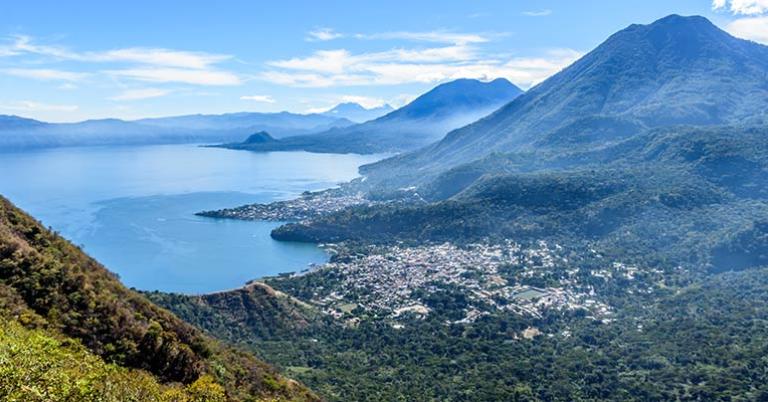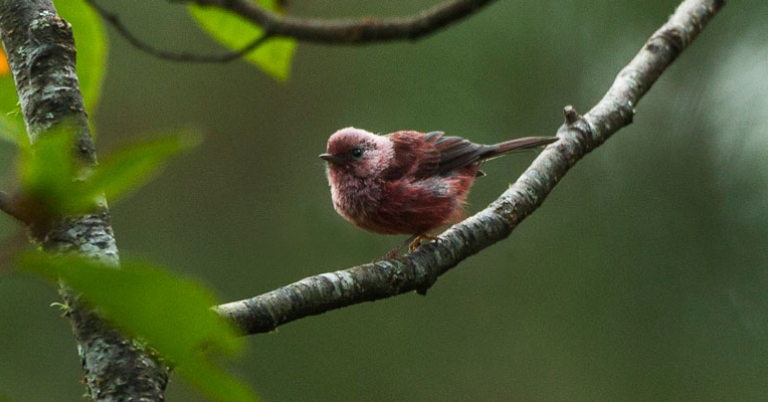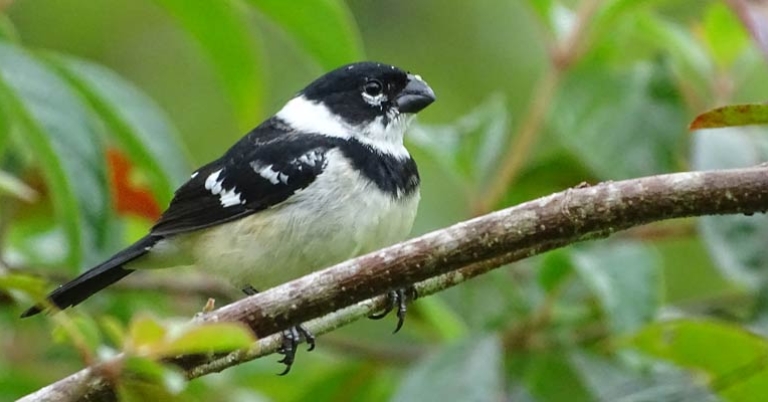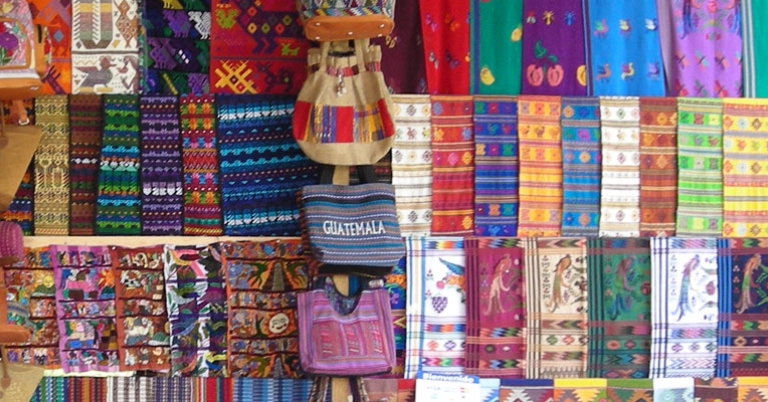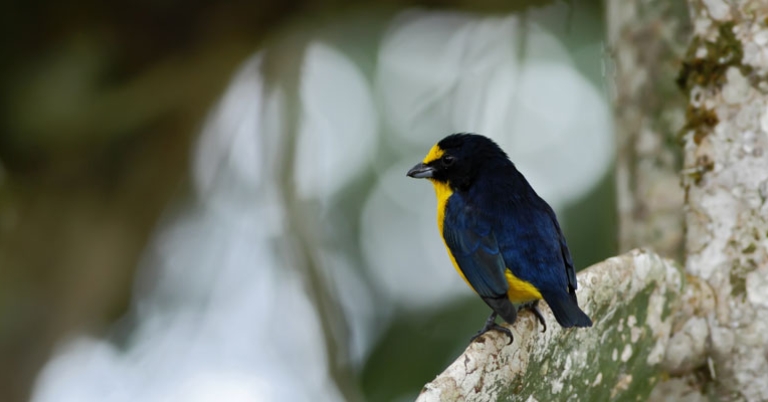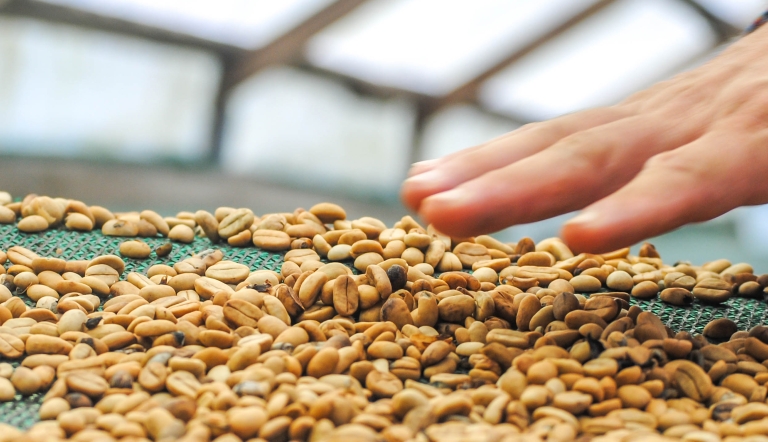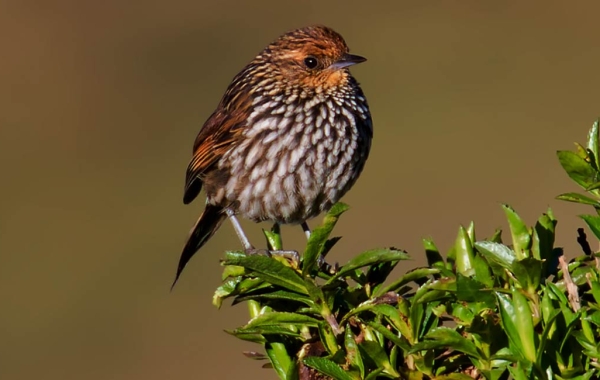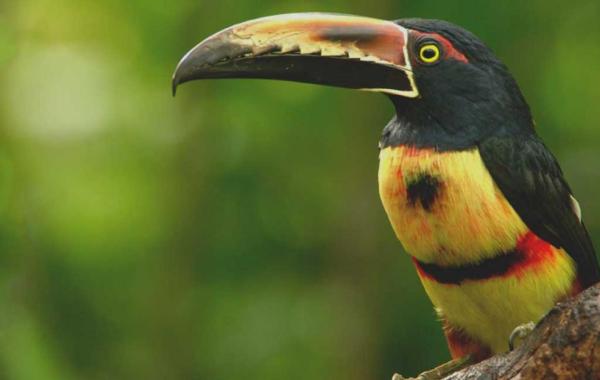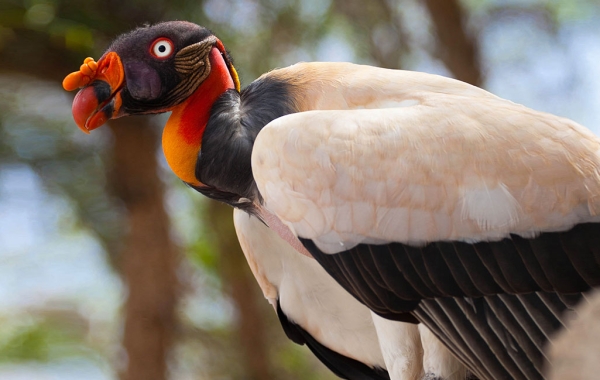Guatemala | Birding Guatemala’s Highlands and Lake Atitlán
About this trip
Guatemala is a richly diverse cultural center and a lush and vibrant paradise for birders. Set in the heart of Central America, it sits within one of the Western Hemisphere’s prime migratory corridors. Enjoy excellent birding opportunities and learn about the Asociación Vivamos Mejor, a non-profit in Panajachel whose programs include training nearby residents to become birding and nature guides. Together with an expert guide and part-time apprentice guides, you’ll explore a variety of habitats at varying elevations and see firsthand many of the area's rare and endemic species.
Highlights
- Ascend to the higher-elevation forests of Los Andes Private Nature Reserve, where you may spot the Resplendent Quetzal as well as species like the Tody Motmot, Northern Emerald-Toucanet, and Yellow-throated Nightingale-Thrush.
- Bird the lower and upper trails at Los Tarrales—an area that harbors 21 regional endemic species—with the goal of seeing the Long-tailed Manakin’s impressive courtship display.
- Visit the pine-oak forests of Corazón del Bosque Reserve for the chance to see Mountain Trogon, Rufous-browed Wren, the local form of the Yellow-eyed Junco (which many consider a separate species), and with luck, the uncommon Pink-headed Warbler.
- Explore the relatively new birding site of Parque Mirador del Rey Tepepul, an 8,600-acre forest park with a wide altitudinal range where you may be able to see Yellow-naped Amazon, Blue-crowned Chlorophonia, and the near-endemic Azure-rumped Tanager.
- Meet representatives from Asociación Vivamos Mejor, a private nonprofit organization committed to improving the quality of life in communities surrounding Lake Atitlán.
- Take a boat ride across Lake Atitlán and visit the archaeological site of Semetabaj for a look at Maya history and the chance to see Guatemalan Flicker, Melodious Blackbird, and Yellow-winged Tanager.
Activity Level 2: Easy-Moderate
This birding journey spotlights one of the hemisphere’s prime migratory corridors while helping to preserve Important Bird and Biodiversity Areas (IBAs) and support local communities. Your itinerary features 1- to 2-night stays in six locations over 11 days. Daily birdwatching excursions (including an optional nighttime walk) are led by trained local guides, and last from 1–4 hours. Trails are mainly unpaved but well-maintained, with both gradual and steep inclines and some slippery, rocky, or uneven sections. One very strenuous hike to the San Pedro Volcano is included, but optional. In the highlands you’ll reach elevations of up to 5,500 feet. Look forward to cultural interaction when you visit local villages, farms, and a school. Highland climate is consistently pleasant, with average daily temperatures in the mid- to upper 60s (°F) during the dry season (November to April.) There is one boat ride. Overland transfers last 1–5 hours in private, air-conditioned motorcoaches.
$3,495
Land Cost
Group size
Book 10 travelers and 1 group
leader travels for free
What makes us different
Unique Itineraries
Service anytime
Carbon offsetting
Top birding guides
Bird-based tourism
Flight arrangements
Daily Itinerary
Print ItineraryAntigua
Day 1Antigua
Day 2Los Andes Private Nature Reserve
Day 3Los Andes Private Nature Reserve
Day 4Los Tarrales Reserve
Day 5Los Tarrales Reserve
Day 6Santiago de Atitlan
Day 7Santiago de Atitlan
Day 8Santiago de Atitlan
Day 8Panajachel
Day 9Guatemala City
Day 10Day 11
Pricing
Print Pricing$3,495
Land Cost
Group size
Book 10 travelers and 1 group
leader travels for free
What's Included
- Accommodations with private bathrooms
- Activities and meals as mentioned in itinerary
- Arrival and departure transfers based on individual flight schedules
- Full time expert birding naturalist guide for duration of program
- Carbon Offset
- Private transportation and driver for the duration of the program
What's Not Included
- International airfare
- Tips
- Travel Insurance
Pricing Details
Prices are valid for travel from Jan 1, 2025 - Dec 31, 2026. Holiday surcharges may apply.
Travel Info
Print Travel InfoEntry & Exit Requirements
U.S. citizens must have a valid passport to enter Guatemala. Passports must be valid for at least six months past the date of entry and must have at least one blank page. A visa is not required for visits up to 90 days.
If you are not traveling with a U.S. passport, please check with the Guatemalan Embassy for the requirements based on your nationality.
Health Information
IMMUNIZATIONS
The Centers for Disease Control recommends that all travelers be up to date on routine vaccinations such as measles-mumps-rubella (MMR) vaccine, diphtheria-pertussis-tetanus vaccine, varicella (chicken pox) vaccine, and your yearly flu shot before every trip.
There are no vaccinations required for entry into Guatemala, unless you are traveling from (or transiting through) a country where yellow fever transmission is a risk.
Though not required, the CDC recommends vaccination against hepatitis A, hepatitis B, and typhoid for most unvaccinated travelers to Guatemala.
Please consult your physician for additional information and recommendations based on your individual circumstances.
MALARIA
Malaria is caused by a parasite found in Anopheles mosquitos, which are active from dusk until dawn. The CDC advises that travelers to some regions of Guatemala, especially at elevations below 5,000 feet, may be at risk for exposure to malaria. According to the CDC, the risk of malaria is very low in Guatemala City, Antigua, and around Lake Atitlán.
Nevertheless, travelers should be prepared to take precautions against mosquito bites. To protect against mosquitos, the CDC recommends that you cover exposed skin with lightweight, long-sleeved shirts and pants, consider treating clothes with permethrin, and use an insect repellent containing an EPA-registered active ingredient like DEET, picaridin, or oil of lemon eucalyptus (OLE). Apply sunscreen first, followed by the repellent, ideally 20 minutes later.
Be careful when applying products containing DEET, as it can damage or dissolve certain synthetic fabrics as well as plastic, rubber, vinyl, or elastic materials, such as those used in camera equipment, binoculars, phone cases, sunglasses, or watches. Additionally, some research suggests that when DEET and picaridin enter local waterways, they can be harmful to amphibians and other wildlife. When selecting a repellent, it is ultimately up to each traveler to weigh the risks and benefits of different options, keeping in mind both environmental factors and the importance of protecting against illness.
DENGUE FEVER & OTHER INSECT-BORNE ILLNESSES
Other insect-borne illnesses such as dengue fever, Zika virus, and leishmaniasis are known to occur in Guatemala. Travelers should protect themselves against insect bites using the measures described above.
As a precaution, the CDC advises women who are pregnant to consider postponing travel to any area where Zika virus transmission is ongoing.
After spending time outdoors, especially in grassy or wooded areas, the CDC recommends showering and conducting a full-body check for ticks. If you find a tick attached to your skin, safely remove it as soon as possible.
OTHER NUISANCE PESTS
In places with rich vegetation and proximity to bodies of water, you may encounter chiggers. These are mites that can superficially attach to skin and leave behind itchy red bumps that appear 3-6 hours after initial contact. Their bites are sometimes mistaken for those of bed bugs or other insects; however, unlike bed bugs, which tend to target exposed skin, chiggers look for skin folds or areas where clothing fits tightly—like the ankles, waist, underarms, elbow creases, and the back of the knees—to feed on broken-down skin cells. They are not known to transmit any illnesses in Guatemala but can cause considerable discomfort.
We recommend that travelers protect themselves against chigger bites using the measures noted above. Additionally, if potential exposure occurs, we recommend showering and scrubbing skin with soap and hot water as quickly as possible. If that is not immediately feasible, promptly rub skin with a dry towel or cloth and place any exposed clothing in a zip-top bag until it can be washed. To treat any itchiness, we suggest over-the-counter anti-itch lotion and/or oral antihistamines.
SUN EXPOSURE
The effects of the sun can be damaging to the eyes and skin. Spending time outdoors exposes you to the sun’s harmful ultraviolet (UV) rays, even on cloudy days. To protect yourself from the sun, use a broad spectrum sunscreen of at least SPF 15, protect skin with clothing, wear a wide-brimmed hat and sunglasses, and drink plenty of fluids.
ALTITUDE SICKNESS
At high elevations (above 5,000 feet), altitude sickness is a possibility. Stay hydrated and well-rested, and avoid heavy, fatty foods and alcohol in the days before arrival. Consult your physician prior to travel for advice specific to your situation.
Respiratory Illness Protocols
Please review our Respiratory Illness Protocols page, which explains our policy and procedures if you or another traveler should develop symptoms of a respiratory illness during your trip. Your participation in a Holbrook Travel program indicates that you are in agreement with these protocols.
Resources
Print ResourcesPacking Recommendations
Everyone has personal preferences when it comes to packing; for this reason, the information below is offered as a general guide and not a definitive list. You know yourself best: Use your discretion and pack what you think will serve you, based on your personal preferences and specific itinerary.
You may find many of the items below in our Gear Store.
CLOTHING
Casual, comfortable clothing is suitable for most activities in Guatemala. You may wish to bring a slightly nicer outfit or two (eg sundress, polo shirt) if your itinerary includes dinners out or more formal activities.
Bring enough clothing suitable for the length of your program. If you prefer to pack light, note that some hotels offer laundry services at additional cost. If you plan to hand-wash items, remember that humidity may delay drying time.
Pack clothing that can be worn in layers to adapt to weather changes throughout the day. The rainy season around Lake Atitlán is May through October, but it can rain at any time. Clothing that wicks away moisture and dries quickly is recommended.
For birding programs, pack muted colors such as khaki, olive, and forest green.
- A combination of short-sleeved and lightweight, long-sleeved shirts for sun and insect protection
- Shorts
- Lightweight, quick-drying long pants for sun and insect protection; heavier-weight pants or trousers tend to be uncomfortable in hot and humid conditions, but are fine in the cooler highlands.
- Undergarments
- Sleepwear
- Light- to medium-weight jacket or sweater/sweatshirt – Temperatures can get cool in the evenings and early mornings, especially at higher elevations.
- Bathing suit – Some hotels have pools.
- Socks – Bring extra pairs.
- Shoes – You’ll likely want at least one pair of comfortable, closed-toe walking or hiking shoes or boots suitable for forest hikes and walking over cobblestones or other uneven terrain. In addition, many participants opt for a pair of sturdy sport-strap sandals (e.g. Keens, Tevas, or similar) and/or casual flip-flops or sandals for around the hotel.
- Lightweight rain jacket, hooded poncho, and/or windbreaker
- Visor or wide-brimmed sun hat
- Bandana, scarf, or neck gaiter
Personal Toiletries
Pack toiletries based on your personal preferences and habits. Below are just a few recommendations to keep in mind.
- Shampoo, conditioner, lotion, deodorant/antiperspirant , etc. – If possible, avoid strong fragrances if you are sensitive to insect bites (and to be considerate of you fellow travelers).
- Soap and washcloth or a small, quick-drying microfiber towel – Washcloths are not standard in all hotels. If you normally use a washcloth, you may wish to bring one from home.
- Hairbrush, comb, hair ties, shower cap
- Toothbrush and toothpaste
- Razor
- Ear plugs, especially if you are a light sleeper
- Personal hygiene products
- Insect repellent (see note below about treating clothing with permethrin)
- Sunscreen and lip balm with SPF
- Aloe vera gel
- A travel pack of tissues – also useful as napkins or toilet paper if needed
In addition to your personal toiletries, it is useful to pack a small medical kit, which you can easily prepare. Helpful items might include: bandages, antihistamine, a pain reliever, motion sickness and/or altitude sickness medication (if you are prone to either), anti-diarrhea medicine, individually wrapped pre-moistened towelettes and/or hand sanitizer, antibiotic ointment, anti-fungal cream, moleskin for blisters, eye drops, tweezers, a mini sewing kit, and an extra pair of disposable contact lenses or eyeglasses if you wear them.
Days before you leave home, you may wish to consider spraying any clothing, socks, and shoes that will be worn in lowland, tropical sites with permethrin, an anti-parasite medication, to repel irritating pests and prevent the spread of disease. A recommended brand is Sawyer. Carefully read all instructions before use. Please note permethrin is highly toxic to cats and fish, and some aerosol products may be harmful to birds. Side effects may include minor itching, burning, or redness. You may want to use a laundry marker to label and keep track of which socks are permethrinized. Only one application per item is necessary; permethrin on treated clothes remains effective through several washings. Permethrin should NOT be applied directly to skin.
Miscellaneous
Remember to pack valuables such as your passport, cash/credit cards, and medications in your carry-on luggage.
- Passport and photocopies of all travel documentation
- Personal insurance card and travel insurance information
- Money – ATM/credit card, traveler's checks, and/or cash; small bills in good condition are recommended
- Prescription medicines (if applicable), with a copy of the prescription
- Yellow fever certificate (if required; only if arriving from a country where yellow fever transmission is a risk)
- Sunglasses with strap
- Small day pack for hikes and excursions
- Flashlight and/or head lamp
- Travel alarm clock or inexpensive waterproof wristwatch with alarm – Not all hotels provide alarm clocks.
- A pocket calculator or phone to assist with conversions and currency exchange
- Binoculars with lens cleaner
- Camera and related equipment, such as charger, lenses, and extra memory cards
- Reusable water bottle
- Non-perishable snacks
- Pocket-knife or multipurpose tool – Pack in your checked luggage.
- Zip-top style bags – useful for packing toiletries, sorting clothing, storing damp or muddy shoes, or as a dry bag for protecting electronics
- Notepad or travel journal and pen
- Music or reading material for down time, long bus drives, or on the airplane, and a portable bright light to read by
- Collapsible walking stick with rubber tip – Pack in your checked luggage.
- A small quantity of laundry detergent if you’ll be washing clothing by hand
- Money belt
- Chargers for electronics
- Plug adapter – some electrical outlets use type A or B, as in the United States, while others use outlet type G or I, requiring an adapter; a voltage converter is not necessary

Questions
For more information, contact us at 800-451-7111 or email travel@holbrooktravel.com.

